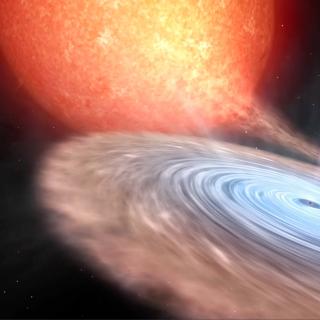Jiménez-Ibarra, F.; Muñoz-Darias, T.; Casares, J.; Armas Padilla, M.; Corral-Santana, J. M.
Bibliographical reference
Monthly Notices of the Royal Astronomical Society
Advertised on:
11
2019
Citations
31
Refereed citations
26
Description
We present high time resolution optical spectroscopy and imaging of the black hole transient Swift J1357.2-0933 during its 2017 outburst. The light curves show recurrent dips resembling those discovered during the 2011 outburst. The dip properties (e.g. duration and depth) as well as the evolution of their recurrence time are similar to those seen in 2011. Spectra obtained during the dips are characterized by broad and blueshifted absorptions in Balmer and He II. The absorptions show core velocities of ̃-800 km s-1 and terminal velocities approaching ̃3000 km s-1 i.e. in the upper end of wind velocities measured in other black hole transients (both at optical and X-ray wavelengths). Our observations suggest that the dips are formed in a dense and clumpy outflow, produced near the disc equatorial plane and seen at high inclination. We also study the colour evolution and observe that, as it has been previously reported, the source turns bluer during dips. We show that this is due to a gradual change in the slope of the optical continuum and discuss possible implications of this behaviour.
Related projects

Black holes, neutron stars, white dwarfs and their local environment
Accreting black-holes and neutron stars in X-ray binaries provide an ideal laboratory for exploring the physics of compact objects, yielding not only confirmation of the existence of stellar mass black holes via dynamical mass measurements, but also the best opportunity for probing high-gravity environments and the physics of accretion; the most
Montserrat
Armas Padilla